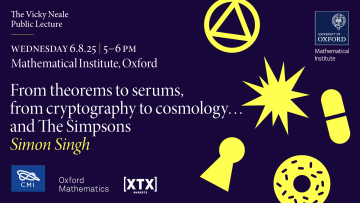Why Networks Matter: Embracing Biological Complexity - John Quackenbush, Harvard T.H. Chan School of Public Health
Tuesday 29 July at 2:00 pm in the Small Lecture Theatre, Department of Statistics
There will be a reception following the talk in the Ground Floor Social Area. There is no need to register – just join us on the day.
16:00
On the classification of quantum lens spaces
Abstract
13:00
An N=4 SYM Collider at Finite Rank and Finite Coupling
Abstract
Energy correlations characterise the energy flux through detectors at infinity produced in a collision event. In CFTs, these detectors are examples of light-ray operators and, in particular, the stress tensor operator integrated over future null infinity. In N=4 SU(N_c) SYM, we combine perturbation theory, holography, integrability, supersymmetric localisation, and modern conformal bootstrap techniques to obtain predictions for such a collider experiment at finite coupling, both at finite number of colours, and in the planar limit. In QCD, the coupling runs with the angle between detectors, and there is a transition from perturbative to non-perturbative QCD. In N=4 SYM, a similar transition occurs when the coupling is varied, which we explore quantitatively. I will describe the physics underlying this observable and some of the methods used, particularly in regimes with analytical control.


